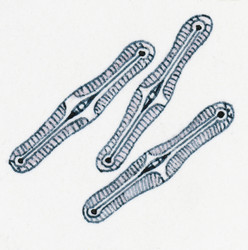New model organism for diatoms
Diatoms are a diverse group of marine algae that perform crucial ecological services, from fixing carbon to providing a source of food and minerals. The EU-funded GYPSY (A forward genetic screen in the marine planktonic diatom Pseudo-nitzschia multistriata) initiative successfully established P. multistriata as a model diatom species to study key biochemical pathways that can be exploited by industry. Researchers began by characterising the diatom's genome, first by sequencing it and then by assigning functions to the genes. The information gained serves as a reference for comparison with other diatom species to define common and unique properties. The project specifically aimed to identify genes involved in the production of biologically important fatty acid-derived compounds like oxylipins. By characterising the biochemical pathways of such compounds, it may be possible to increase their production for industry. GYPSY identified a shortlist of genes potentially responsible for producing a toxin that causes amnesic shellfish poisoning in humans, marine mammals and birds. In addition, further genetic analyses revealed the molecular toolkit used by diatoms for sexual reproduction. This work on P. multistriata has generated invaluable information on diatom evolution and ecology, expanding knowledge on a species responsible for toxic algal blooms that threaten aquaculture. The genetic tools developed for this new model organism will also prove useful to industry, particularly for boosting the production of useful compounds.







